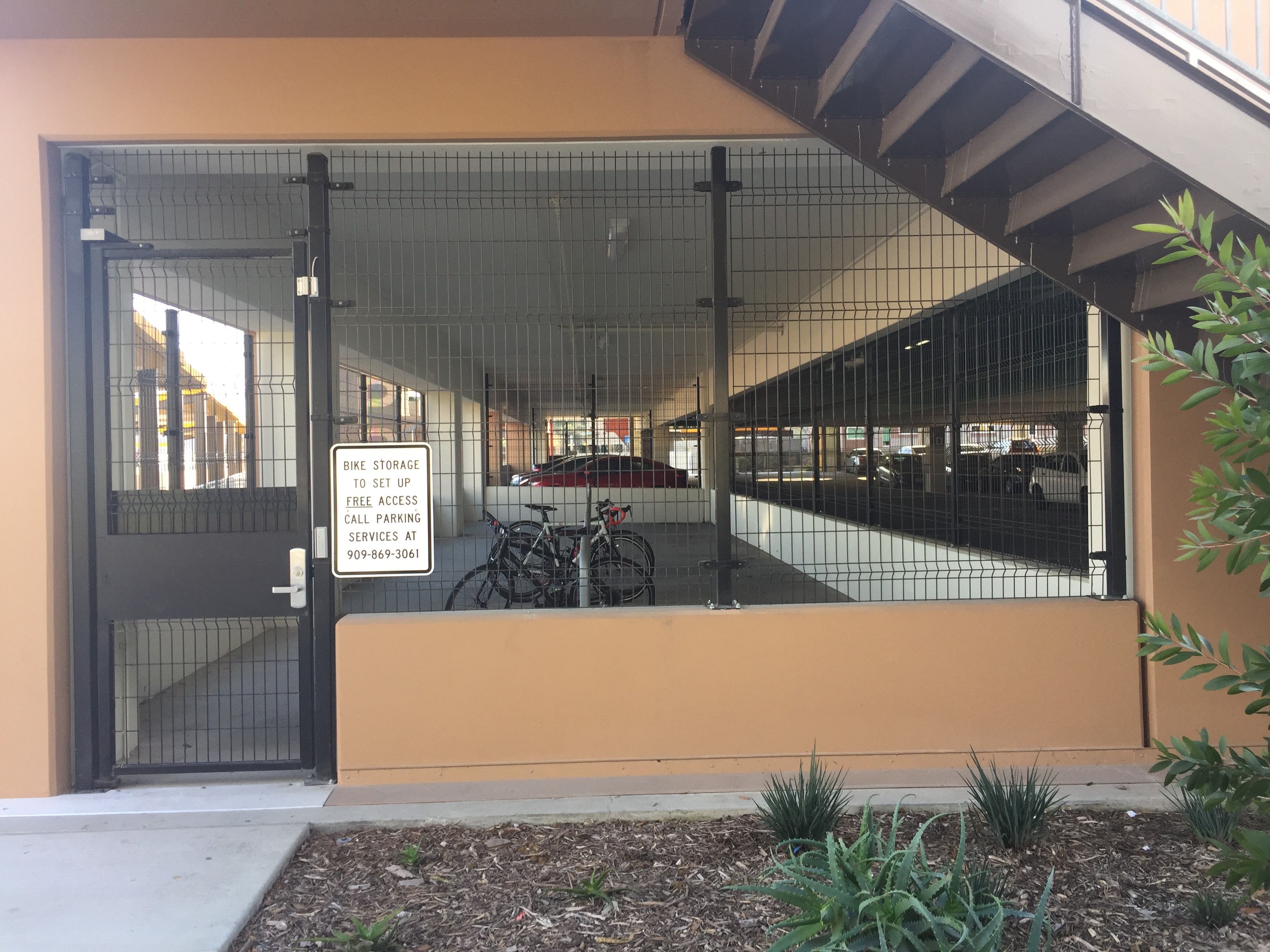Bicycling and Walking to School
Bicycling and Walking are cost effective and environmentally conscious ways to get to and around campus. It is important to be aware of your surroundings at all times for your own safety as well as the safety of those around you. Please obey all traffic laws and operate your bike or mobility devices at decreased speed.

Bike Cage in Parking Structure 2
Cal Poly Pomona students and staff are eligible to park their bicycle in a secure bike cage located in Parking Structure 2. You must have a valid Bronco ID to use this service. 24 hour access to the bike cage is free. To set-up access, please visit the Rideshare Office.
Bicycle Rules
Bicycles must be parked in bicycle racks provided throughout the campus. No bicycle, moped or
two-wheeled vehicles may be parked or brought inside a classroom or building, except as
expressly stated in student housing license agreements. The use of bicycles is allowed in the
following areas only in accordance with the California Vehicle Code:
- All campus roadways and highways
- Pathways specifically designated for bicycles
- Campus parking lots (to access roads and pathways only)
- Campus sidewalks with a width of 10 feet or more not designated as pedestrian only
zones
Rollerblades, Skateboards, Motorized Skateboards, Roller-Skates or Similar Coasting Devices
The use of rollerblades, skateboards, motorized skateboards, roller-skates or similar coasting
devices is allowed in the following areas:
- Walkways and sidewalks not designated as pedestrian only zones
- Pathways specifically designated for bicycles
- Campus parking lots to access walkways and pathways
The use of rollerblades, skateboards, motorized skateboards, roller-skates or similar coasting
devices is prohibited in all areas not listed above including but not limited to:
- All campus roadways and highways
- Equestrian trails and recreational trails
- All pedestrian zones indicated by a red sign stating PEDESTRIAN ZONE ONLY
- Drainage ditches, low walls, statues, railings
Report Safety Concerns
Report dangerous incidents and traffic safety concerns immediately to the University Police Department at (909) 869-3070 or dial 9-1-1 for police or medical emergencies.
Report concerns with sidewalks, signage, bike paths, pedestrian paths, line of sight, landscaping to Parking & Transportation Services at parking@cpp.edu or (909) 869-3061.
Lock It or Lose It!
The best way to keep your bike and mobility devices safe from thieves is to lock it properly. Lock the frame with a sturdy burly chain or U-Lock, and secure the wheels (or other quick-release components) with your lock will ensure your bike is just the way you left it. Cable locks can be cut by theives.
Bicycle Safety Tips when Riding
- Intersections - take extra caution and pay attention to cross traffic and turning vehicles.
- Right Hook - be wary of right turning cars in front of you.
- Door Zone - give yourself enough distance between you and parked cars to avoid suddenly opening doors, even when you are riding in the bike lane.
- Storm Gates and Gutters - both can cause you to fall. Avoid grates that can grab your tire and gutters full of debris.
- Potholes and Sharp Objects - avoid these because they can cause flats.
- Rail Crossings - the tracks can catch your front wheel and are slippery when wet. The safest way to approach rail crossings is at a 90 degree angle.
- Riding at Night - when riding at night you want to make sure others can see you. State law (CVC 21201) requires that you have a white front light and red reflector on the rear. Lights that blink increase your visibility and save batteries.
Bicycle Information
http://www.gmap-pedometer.com/
http://www.labikepaths.com